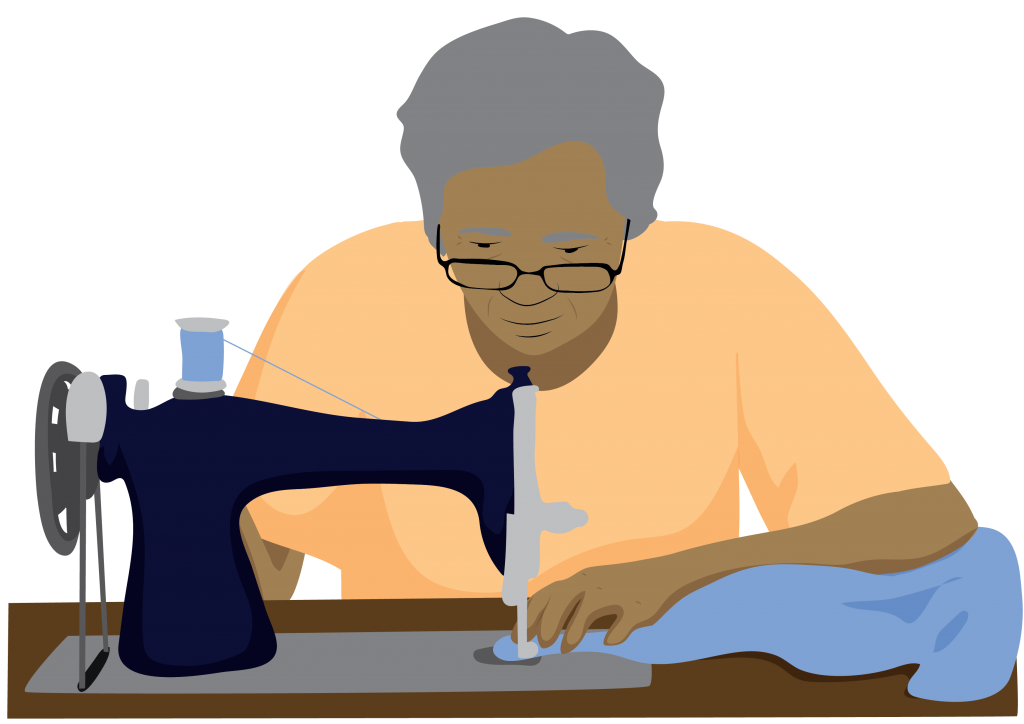Distance or near vision problems
A common cause of distance or near vision problems is refractive error. This is due to the shape of a person’s eye.
Three types of refractive error that can affect people of all ages are:
- Myopia
- Hyperopia
- Astigmatism
Read on to learn about these three types of refractive error
Myopia: People with myopia can see close objects clearly, however more distant objects are blurry. (Myopia can also be called near-sightedness).
Hyperopia: Young people with mild to moderate hyperopia can see objects in the distance clearly, but find it hard to focus on close objects (hyperopia can also be called far-sightedness).
Adults with hyperopia, and young people with severe hyperopia have difficulty seeing objects in the distance and up close.
Astigmatism: People with astigmatism have difficulty seeing clearly in the distance and close up. They may say their eyes are tired or strained.
Compare the four images below to see how myopia, hyperopia and astigmatism can affect what a person sees.
Question
Which of the activities below would be difficult for a person with moderate myopia?
- Read writing on a classroom blackboard
- Identify people sitting across a large room
- Read a book
- Sew
- Read street signs
Depending on how much the person’s vision is affected, these things may be difficult for a person with moderate myopia to do without the right prescription glasses.
- Read writing on a classroom blackboard
- Identify people sitting across a large room
- Read street signs
Which of the activities below would be difficult for a young person with moderate hyperopia?
- Read writing on a classroom blackboard
- Identify people sitting across a large room
- Read a book
- Sew
- Read street signs
Depending on how much the person’s vision is affected, these things may be difficult for a person with moderate hyperopia to do without the right prescription glasses.
- Read a book
- Sew
Myopia, hyperopia and astigmatism can usually be corrected or improved with prescription glasses, contact lenses or surgery.
Discussion
Discuss with colleagues:
- Do you, family members, or people you know wear prescription glasses?
- Are prescription glasses readily available in your area? If so, who provides them? What is the cost?
- What would be the impact for a child with a refractive error who does not have access to prescription glasses?
Meet Alitia (on the left)
Alitia enjoys school, playing soccer, and spending time with her friends.
When Alitia first started school, her teacher noticed that she was finding learning to read difficult, and was losing confidence.
When all students were given a vision screen, Alitia was identified as having a possible vision problem. She was referred to an eye health professional who tested her vision and found that she had myopia. She received prescription glasses.
Alitia very quickly regained her confidence and no longer found her lessons difficult.
She goes for follow up appointments to the eye health professional every year, to make sure her prescription glasses are working well for her.
Presbyopia: Reduced vision with age
Presbyopia is another form of refractive error, which occurs as people reach the age of 40 or more.
Presbyopia affects the ability to see up close. Tasks that use near vision such as reading and sewing become difficult.
Some common signs of presbyopia include:
- Difficulty reading small print
- Needing to hold reading material or small objects further away (at arm’s length) to focus properly
- Getting tired after doing close work such as reading or sewing.
Many people with presbyopia use reading glasses to assist them. They wear the reading glasses just for those tasks that need near vision.
If a person already has myopia, hyperopia or astigmatism as well as presbyopia, they will need prescription glasses. Standard reading glasses are unlikely to be suitable.
Provision of standard reading glasses (not prescription glasses) is included in TAP.
Question
What vision problem do you think Malik has?
- Myopia
- Hyperopia
- Astigmatism
- Presbyopia
Malik has presbyopia (because his vision problem began as he became older and affects seeing up close).
Question
At what age do you think people start to begin experiencing difficulty seeing up close (presbyopia)?
- Between 20-30
- Between 40-50
- Older than 50
People may begin experiencing presbyopia as early as 35 or as late as 50. For most people, presbyopia is likely to begin in their early to mid-40s.





